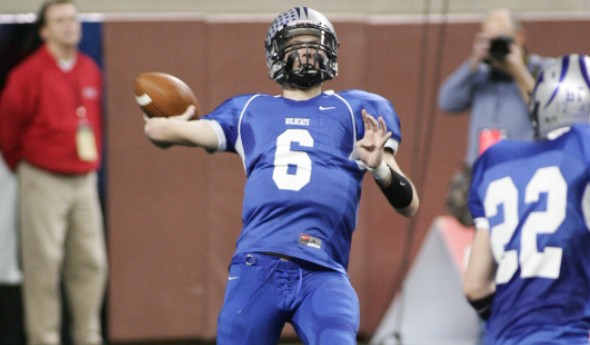
Heads and Heat
August 16, 2012
We are engaged in very serious discussions. They’re not only complicated, with unintended negative consequences possible from what are thought to be positive actions; they’re also a matter of life and death.
The topic is football – the high school sport under most scrutiny today and suffering from the most criticism it’s seen since the 1970s when catastrophic neck injuries spiked, liability awards soared, many insurers balked, and most helmet manufacturers abandoned the business altogether.
During recent years we have learned about the devastating long-term effects of repeated blows to the head; and we’re trying to reduce such hits. We’ve learned that 70 percent of concussions in football result from helmet-to-helmet contact, and we’re trying to have coaches teach blocking and tackling differently and have officials penalize “high hits” consistently and rigorously.
During the past several years we’ve learned that serious heat illness and heat-related deaths are 100 percent preventable, yet nationwide there were 35 heat-related deaths in high school football alone from 1995 to 2010; and we’re promoting practices that acclimatize athletes more gradually than “old school” traditionalists might advocate.
As we simultaneously address issues of heads and heat in football, some coaches may think we’re being overbearing, while many in medical fields say we’re out of date, citing higher standards of the American Academy of Pediatrics, National Athletic Trainers Association and National Federation of State High School Associations, as well as many of our counterpart organizations across the country.
As we consider in-season changes to improve athlete acclimatization and reduce blows to the head, we should be open to making out-of-season changes that work toward rather than in opposition to those objectives. There can be no sacred cows. The topic is too serious.
Ultimately, if we err in the outcome of this year’s discussions about heads and heat in football, it must be on the side of safety, on minimizing risks for student participants. They deserve it and, once again, the sport of football needs it.

Moment: Montague, Kater Air it Out
October 1, 2020
By John Johnson
MHSAA Director of Broadcast Properties
A lot of people say in any sport that there’s a play, or a sequence of plays, that swings a game – that locks down the outcome.
You might be able to define “swing” with a defensive red zone stop and the longest pass play in MHSAA Football Finals history during the 2008 Division 6 championship game.
Montague quarterback Cody Kater found Anthony Root down the right sideline for a pitch and catch that went for 98 yards and squashed a potential comeback by Leslie in a 41-20 win for the Panthers at Ford Field.
The swing began just three plays earlier, when the Montague defense stopped Leslie on downs deep in its own territory with about four minutes to play in the first half. The Blackhawks were knocking on the door, looking to cut into a 21-6 lead when a 4th-and-goal pass fell incomplete.
The Panthers were backed up, but they didn’t back down.
“They thought they had us and, boom, we’re 98 yards the other way,” Kater said to the Detroit Free Press. “I think the ball had even gotten tipped a little bit, but Anthony made a great play.” The pair had already connected for a 46-yard scoring pass in the first quarter.
Montague continued the swing moments later with a pass interception by Jordan Degen with a minute to play that led to a TD run by A.J. LaRue, which gave the Wildcats a 35-6 halftime lead.
Kater was an efficient 4 of 6 passing for 175 yards in the game, while Root accounted for 144 of that total with his two scoring catches. The Wildcats defense forced four turnovers.
PHOTO: Montague's Cody Kater launches a pass from his team's end zone in 2008 that turned into a 98-yard reception, the longest in MHSAA Finals history.

